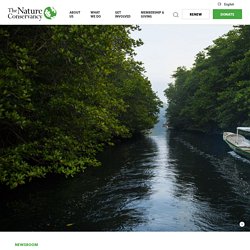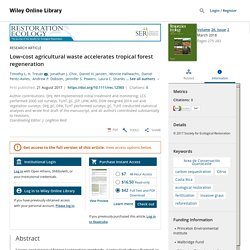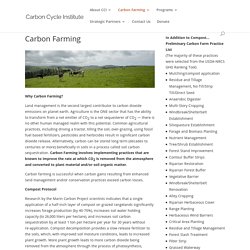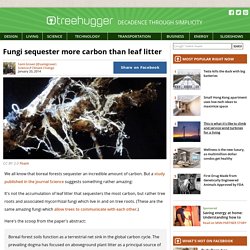

New Study Finds Nature is Vital to Beating Climate Change. Better stewardship of the land could have a bigger role in fighting climate change than previously thought, according to the most comprehensive assessment to date of how greenhouse gas emissions can be reduced and stored in forests, farmland, grasslands and wetlands using natural climate solutions.

The peer-reviewed study, led by scientists from The Nature Conservancy and 15 other institutions, and published today in the journal Proceedings of the National Academy of Sciences, expanded and refined the scope of land-based climate solutions previously assessed by the United Nations’ Intergovernmental Panel for Climate Change (IPCC). The findings are expected to bolster efforts to ensure that large-scale protection, restoration, and improved land management practices needed to stabilize climate change are achieved while meeting the demand for food and fiber from global lands.
The Biggest Natural Climate Solution: More Trees The Vital Role of Agriculture Dr. Low‐cost agricultural waste accelerates tropical forest regeneration - Treuer - 2018 - Restoration Ecology. Lower‐cost tropical forest restoration methods, particularly those framed as win–win business‐protected area partnerships, could dramatically increase the scale of tropical forest restoration activities, thereby providing a variety of societal and ecosystem benefits, including slowing both global biodiversity loss and climate change.

Here we describe the long‐term regenerative effects of a direct application of agricultural waste on tropical dry forest. In 1998, as part of an innovative agricultural waste disposal service contract, an estimated 12,000 Mg of processed orange peels and pulp were applied to a 3 ha portion of a former cattle pasture with compacted, rocky, nutrient‐poor soils characteristic of prolonged fire‐based land management and overgrazing in Área de Conservación Guanacaste, northwestern Costa Rica.
12,000 tons of food waste transformed a barren landscape into something surprising. Carbon Farmers of Australia - Carbon Farming. Carbon Cycle Institute. Why Carbon Farming?

Land management is the second largest contributor to carbon dioxide emissions on planet earth. Agriculture is the ONE sector that has the ability to transform from a net emitter of CO2 to a net sequesterer of CO2 — there is no other human managed realm with this potential. Common agricultural practices, including driving a tractor, tilling the soil, over-grazing, using fossil fuel based fertilizers, pesticides and herbicides result in significant carbon dioxide release. Alternatively, carbon can be stored long term (decades to centuries or more) beneficially in soils in a process called soil carbon sequestration. Carbon Farming involves implementing practices that are known to improve the rate at which CO2 is removed from the atmosphere and converted to plant material and/or soil organic matter.
Carbon farming is successful when carbon gains resulting from enhanced land management and/or conservation practices exceed carbon losses. Compost Protocol Grasslands Are Key. 2015 White Paper web. Beyond organic: Carbon farming is a pathway to climate stabilization and resilient soils : TreeHugger. Through the adoption of smart carbon farming practices, an acre of land could store anywhere from 10 to 100 tons or more of carbon, which can help both mitigate climate change and improve crop yields.

Addressing the climate crisis calls for an 'all of the above' approach to reducing carbon emissions and increasing carbon sequestration, and although many of us are inclined to supporting organic farming practices, it's high time we started focusing on carbon farming practices as well. Organically grown food, while a preferable choice for green shoppers in grocery stores and farmers markets, isn't necessarily the same thing as food grown using smart carbon farming practices, and though the two aren't mutually exclusive, demand for organics is driven more by marketing, while the other is still a bit of a mystery to the average person. Fungi sequester more carbon than leaf litter. We all know that boreal forests sequester an incredible amount of carbon.

But a study published in the journal Science suggests something rather amazing: It's not the accumulation of leaf litter that sequesters the most carbon, but rather tree roots and associated mycorrhizal fungi which live in and on tree roots. (These are the same amazing fungi which allow trees to communicate with each other.) Here's the scoop from the paper's abstract: Boreal forest soils function as a terrestrial net sink in the global carbon cycle.
Researchers found that anywhere between 47% and 70% of soil carbon found in their samples was the result of fungi.What this means for long term forest and carbon management remains to be seen, except to say we have yet another reason to better understand the amazing world of mushrooms—and to protect the ecosystems that they call home. But that's just a layman's hope, and not something covered in this particular research. The fungi will thank us for it.